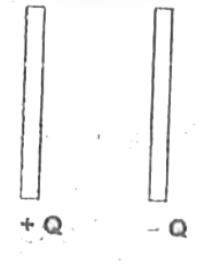The capacitance of a parallel plate capacitor is 2μF and the charge on its positive plate is 2μC. If the charge on its plates is doubled, the capacitance of the capacitor
remains 2μF
becomes 1μF
becomes 4μF
data insufficient
The correct Answer is:A
To solve the problem, we need to understand the relationship between capacitance, charge, and voltage in a parallel plate capacitor.
Step 1: Understand the given values.
- The capacitance C of the capacitor is given as 2μF (microfarads).
- The charge Q on the positive plate is given as 2μC (microcoulombs).
Step 2: Recall the formula for capacitance.
The capacitance C of a parallel plate capacitor is defined by the formula:
C=QV
where Q is the charge on one plate and V is the voltage across the plates.
Step 3: Analyze the effect of doubling the charge.
According to the problem, if the charge on the plates is doubled, the new charge Q′ will be:
Q′=2×Q=2×2μC=4μC
Step 4: Determine the effect on capacitance.
It is important to note that the capacitance C of a capacitor is determined by its physical characteristics (area of the plates, distance between the plates, and the dielectric material) and does not depend on the charge stored. Therefore, even if the charge is doubled, the capacitance remains the same.
Thus, the capacitance remains:
C′=C=2μF
Final Answer:
The capacitance of the capacitor remains 2μF.
---
- The capacitance C of the capacitor is given as 2μF (microfarads).
- The charge Q on the positive plate is given as 2μC (microcoulombs).
The capacitance C of a parallel plate capacitor is defined by the formula:
C=QV
where Q is the charge on one plate and V is the voltage across the plates.
According to the problem, if the charge on the plates is doubled, the new charge Q′ will be:
Q′=2×Q=2×2μC=4μC
It is important to note that the capacitance C of a capacitor is determined by its physical characteristics (area of the plates, distance between the plates, and the dielectric material) and does not depend on the charge stored. Therefore, even if the charge is doubled, the capacitance remains the same.
C′=C=2μF
The capacitance of the capacitor remains 2μF.
Similar Questions
Knowledge Check
The capacitance of a parallel plate capacitor with air as medium is 3μF. with the introduction of a dielectric medium between the plates, the capacitance becomes 15μF. The permittivity of the medium is
A5C2N−1M−2B15C2N−1m−2C0.44×10−10C2N−1m−2D8.854×10−11C2N−1m−2
Find out the capacitance of parallel plate capacitor of plate area A and plate separation d.
View SolutionIn a parallel plate capacitor with plate area A and charge Q, the force on one plate because of the charge on the other is equal to
View SolutionConsider a parallel plate capacitor having charge Q. Then,

View SolutionA parallel plate capacitor has an electric field of 105V/m between the plates. If the charge on the capacitor plate is 1μC, then force on each capacitor plate is-
View SolutionA parallel plate capacitor is charged and then isolated. On increasing the plate separation
View SolutionThe separation between the plates of a parallel-plate capacitor is 2 mm and the area of its plates is 5cm2. If the capacitor is charged such that it has 0.01J energy stored in it, the electrostatic force of attraction between its plates is _______N.
View SolutionA parallel plate capacitor is charged. If the plates are pulled apart
View Solution
